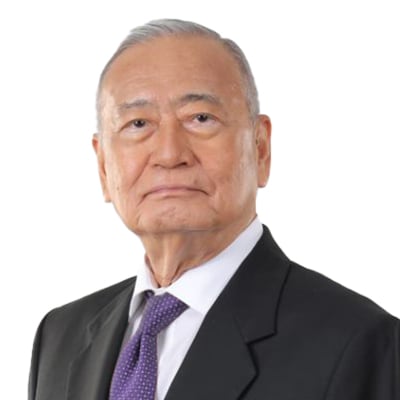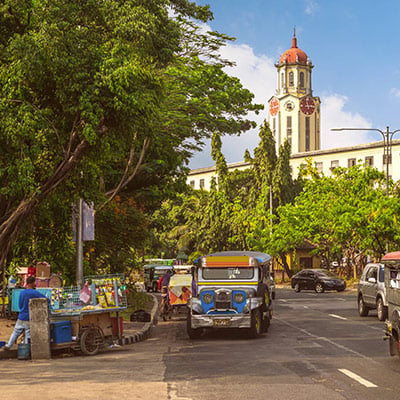-
Audit approach overview
Our audit approach will allow our client's accounting personnel to make the maximum contribution to the audit effort without compromising their ongoing responsibilities
-
Annual and short period audit
At P&A Grant Thornton, we provide annual and short period financial statement audit services that go beyond the normal expectations of our clients. We believe strongly that our best work comes from combining outstanding technical expertise, knowledge and ability with exceptional client-focused service.
-
Review engagement
A review involves limited investigation with a narrower scope than an audit, and is undertaken for the purpose of providing limited assurance that the management’s representations are in accordance with identified financial reporting standards. Our professionals recognize that in order to conduct a quality financial statement review, it is important to look beyond the accounting entries to the underlying activities and operations that give rise to them.
-
Other Related Services
We make it a point to keep our clients abreast of the developments and updates relating to the growing complexities in the accounting world. We offer seminars and trainings on audit- and tax-related matters, such as updates on Accounting Standards, new pronouncements and Bureau of Internal Revenue (BIR) issuances, as well as other developments that affect our clients’ businesses.
-
Tax advisory
With our knowledge of tax laws and audit procedures, we help safeguard the substantive and procedural rights of taxpayers and prevent unwarranted assessments.
-
Tax compliance
We aim to minimize the impact of taxation, enabling you to maximize your potential savings and to expand your business.
-
Corporate services
For clients that want to do business in the Philippines, we assist in determining the appropriate and tax-efficient operating business or investment vehicle and structure to address the objectives of the investor, as well as related incorporation issues.
-
Tax education and advocacy
Our advocacy work focuses on clarifying the interpretation of laws and regulations, suggesting measures to increasingly ease tax compliance, and protecting taxpayer’s rights.
-
Business risk services
Our business risk services cover a wide range of solutions that assist you in identifying, addressing and monitoring risks in your business. Such solutions include external quality assessments of your Internal Audit activities' conformance with standards as well as evaluating its readiness for such an external assessment.
-
Business consulting services
Our business consulting services are aimed at addressing concerns in your operations, processes and systems. Using our extensive knowledge of various industries, we can take a close look at your business processes as we create solutions that can help you mitigate risks to meet your objectives, promote efficiency, and beef up controls.
-
Transaction services
Transaction advisory includes all of our services specifically directed at assisting in investment, mergers and acquisitions, and financing transactions between and among businesses, lenders and governments. Such services include, among others, due diligence reviews, project feasibility studies, financial modelling, model audits and valuation.
-
Forensic advisory
Our forensic advisory services include assessing your vulnerability to fraud and identifying fraud risk factors, and recommending practical solutions to eliminate the gaps. We also provide investigative services to detect and quantify fraud and corruption and to trace assets and data that may have been lost in a fraud event.
-
Cyber advisory
Our focus is to help you identify and manage the cyber risks you might be facing within your organization. Our team can provide detailed, actionable insight that incorporates industry best practices and standards to strengthen your cybersecurity position and help you make informed decisions.
-
ProActive Hotline
Providing support in preventing and detecting fraud by creating a safe and secure whistleblowing system to promote integrity and honesty in the organisation.
-
Accounting services
At P&A Grant Thornton, we handle accounting services for several companies from a wide range of industries. Our approach is highly flexible. You may opt to outsource all your accounting functions, or pass on to us choice activities.
-
Staff augmentation services
We offer Staff Augmentation services where our staff, under the direction and supervision of the company’s officers, perform accounting and accounting-related work.
-
Payroll Processing
Payroll processing services are provided by P&A Grant Thornton Outsourcing Inc. More and more companies are beginning to realize the benefits of outsourcing their noncore activities, and the first to be outsourced is usually the payroll function. Payroll is easy to carve out from the rest of the business since it is usually independent of the other activities or functions within the Accounting Department.
-
Our values
Grant Thornton prides itself on being a values-driven organisation and we have more than 38,500 people in over 130 countries who are passionately committed to these values.
-
Global culture
Our people tell us that our global culture is one of the biggest attractions of a career with Grant Thornton.
-
Learning & development
At Grant Thornton we believe learning and development opportunities allow you to perform at your best every day. And when you are at your best, we are the best at serving our clients
-
Global talent mobility
One of the biggest attractions of a career with Grant Thornton is the opportunity to work on cross-border projects all over the world.
-
Diversity
Diversity helps us meet the demands of a changing world. We value the fact that our people come from all walks of life and that this diversity of experience and perspective makes our organisation stronger as a result.
-
In the community
Many Grant Thornton member firms provide a range of inspirational and generous services to the communities they serve.
-
Behind the Numbers: People of P&A Grant Thornton
Discover the inspiring stories of the individuals who make up our vibrant community. From seasoned veterans to fresh faces, the Purple Tribe is a diverse team united by a shared passion.
-
Fresh Graduates
Fresh Graduates
-
Students
Whether you are starting your career as a graduate or school leaver, P&A Grant Thornton can give you a flying start. We are ambitious. Take the fact that we’re the world’s fastest-growing global accountancy organisation. For our people, that means access to a global organisation and the chance to collaborate with more than 40,000 colleagues around the world. And potentially work in different countries and experience other cultures.
-
Experienced hires
P&A Grant Thornton offers something you can't find anywhere else. This is the opportunity to develop your ideas and thinking while having your efforts recognised from day one. We value the skills and knowledge you bring to Grant Thornton as an experienced professional and look forward to supporting you as you grow you career with our organisation.
Months after the release of the results of the Program for International Student Assessment (PISA) in 2022, the very low performance of Philippine students in this international assessment is still often discussed among various concerned groups.
PISA is a triennial international assessment organized by the Organization for Economic Cooperation and Development (OECD) for 15-year-old students in participating countries and economies in three subjects: mathematics, reading, and science. The Philippines first participated in PISA in 2018. PISA 2022 should have been conducted in 2021, but was delayed because of COVID-19.
According to the related OECD Report, PISA 2022 was participated by 81 countries and economies (although the results list shows only 80, with the United States appearing only in one subject: mathematics).
In our related research regarding the Philippine assessment results, we gathered in the Notes covering the Senate Committee on Basic Education hearings conducted in February 2024 that about 7,200 15-year-old Filipino students participated in the 2022 assessment. These 15-year-olds came from 188 public and private schools throughout the country and were selected from a population representing 83% of all the 15-year-old students in the country at that time.
Based on a separate inquiry, the assessment of the Filipino students was conducted in English.
The assessment results of the Filipino students are dismal: in mathematics, the Filipino students scored 355 compared to the highest score of 575 (Singapore), ranking 75th out of 80; in reading, they scored 347 compared to the highest score of 543 (also Singapore), equivalent to a rank of 75; and in science, they scored 356 compared to the highest score of 561 (Singapore still), ranking 78th.
Compared to the PISA 2018 results, Filipino students’ scores in PISA 2022 show slight improvements in reading by 7 score points and in science by 2 score points, with a decline of one score point in mathematics.
It is worthy to note that the highest five scores in the three subjects were achieved almost exclusively by six countries and economies in East Asia: Singapore, Japan, Chinese Taipei, Korea, Macao and Hong Kong. Three of them, Singapore, Japan and Chinese Taipei, are in the top 5 in all three subjects. (China, as a country, appeared not to have participated).
These very poor assessment results of our students indicate clearly that we must do something vastly different, and do so urgently, in the design and conduct of providing primary and secondary education to our young people.
The notes covering the hearings of the Senate Committee on Basic Education mentioned earlier do indicate some broad actions that may need to be studied, improved, and implemented.
Similarly, many of our citizens are so concerned with the implied poor state of our education systems such that practically all of them appear to have formulated their own ideas of what to do.
I would like to present though that even when we implement the seemingly obvious and mostly talked about solutions, these actions will not be enough to solve the problem effectively. I believe that there is a fundamental underlying cause that leads to the inability of young Filipinos to adequately comprehend what they are being taught and what they are required to learn.
This fundamental cause is the present requirement to change the teaching language medium midway during the whole elementary education in our public elementary schools.
At present, the teaching language medium for Kindergarten to Grade 3 in public schools is required to be the language spoken in the geographical area where the school is located. This means that in a public elementary school in Legazpi, Albay, the language medium of instruction for those first four grade levels is Bicolano. Similarly, the required teaching language medium in a school in Cebu City is Cebuano.
From Grade 4, the teaching language medium is required to be changed to English which continues to be the required teaching language medium up to high school and then college.
Starting from Grade 4, the textbooks and other reading materials required for teaching and learning are written in English. Necessarily so, as English is the required teaching medium from that grade level and going forward.
Because of the sudden change, we can just imagine the confusion that occurs in the classroom for both the teacher and the students. To enable both parties to cope, what actually happens in the classroom is that the teacher is obliged to continue using the local language in teaching and later on use a mix of the local language and English. Such improvisation cannot be helped considering the abruptly changed circumstances. I understand that such improvisation goes on until the young students finish elementary school.
Under such extraordinary condition, it is clearly inevitable that there occurs in varying degrees a delay, or worse, a loss in learning the knowledge and skills that have been designed for the young Filipino students to acquire during their elementary education. But more than this, such handicap would be compounded as these students move to higher levels of education in high school and in college where additional loads of required learning are piled on earlier weak layers of acquired learning.
Any subsequent efforts to provide remedial measures to recover these learning deficiencies can only be done based on individual effort without any institutional support. This means that only a small number of those multitude of students can make a successful recovery and pursue a successful career.
The covering Notes of the hearings conducted by the Senate Committee on Basic Education mentioned earlier include an observation in the PISA 2022 results that the 15-year-old Filipino students from private schools (which generally use English for teaching starting from the earliest grade) performed better than those from public schools.
Of course, in making such a comparison, other factors come into play and should be considered. In any case, I thought of adding that observation as it reinforces to some extent the principal contention presented earlier.
I am not sure whether current statistical methods and techniques can be effectively applied to isolate the effect on the student’s learning of the peculiar change in the teaching language medium in our elementary school system. Such statistical methods and techniques have been successfully applied in many cases where a specific resulting outcome is affected by several factors, and it is desired to isolate the extent of the effect of one or more of such variables. It would be very interesting to know. For this reason, I invite those who possess the said expertise to explore the applicability of such tools in measuring the effect of the existing dual teaching language medium on the poor results of our young students in PISA 2022.
To be clear, I am not advocating that we use English as the teaching language medium starting from the earliest grade level. What I am suggesting is to adopt a single and consistent language as the teaching medium continuously and without change from the start of a young person’s schooling up to college. I will agree with whatever language is considered more suitable by the decision makers.
That brings us to the broader issue of the fundamental need to adopt a single and consistent language, let me call it “common language”, for use not only in teaching but also in government and business.
In this connection, the current situation in our country is that English is used extensively in government and business, both in speaking and writing. However, the large majority of our citizens can hardly understand, speak, or write in English. There is therefore a great communication divide among us which results, I believe, in no small measure in the lack of interest of most of our people in truly knowing, understanding, and participating in the conduct of our national affairs, particularly those of the government.
We need to remove this great communication divide. We need to make the large majority of our people to be actively concerned with the affairs of our nation and our government and for them to assert much more strongly and persistently their interest in such affairs and their own rightful share in the common wealth. In this way, they can contribute to a significant degree in shaping for the better and at the desirable high level our political and economic developments.
The adoption of a common language that all of us can use for both writing and speaking at a proficient level can bring about these favorable and desirable outcomes.
I realize that making a choice for a common language is quite difficult. It does help though that there are only a few available choices: either the present, but probably now mislabeled, national language; another local language; English; or Spanish. Of course, choosing any of these alternatives will require a lot of work and much time to put the language chosen effectively in place going forward. But we need to accept and surmount whatever those difficulties are because we need and must make a choice.
Making a choice for one of the local languages would not be unique to the Philippines. Indonesia had done so when it became independent from the Netherlands in the late 1940s and chose Malay, the language spoken in Sumatra (which is also the language spoken in West Malaysia). Of course, China adopted one, Mandarin, a long time ago.
The alternative choice for a foreign language would not be unique to us either. Singapore adopted English despite having as alternative choices native languages spoken by its own citizens, which are Chinese, Malay, and Indian.
The need for a common language for use of the entire Philippine nation is a fundamental and urgent issue. Our country simply cannot march towards a desirable level of progress without one.
We must act now. And decisively. We are already much, much delayed as it is.




